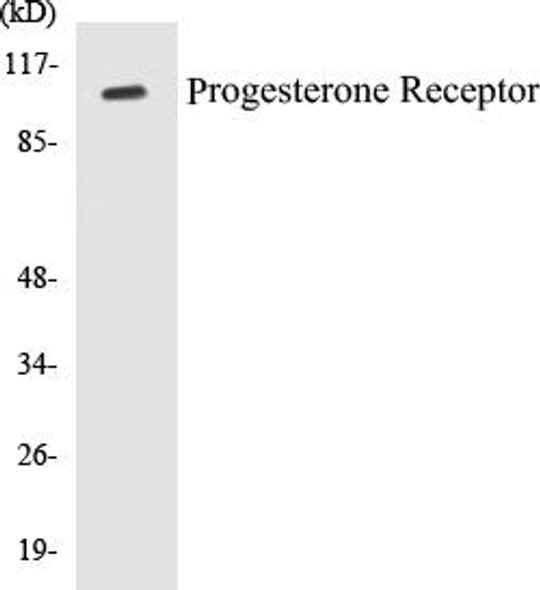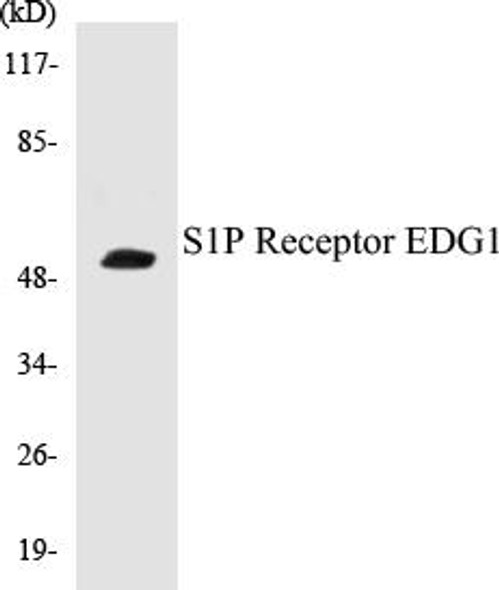Description
| Product Name: | Opioid Receptor Colorimetric Cell-Based ELISA |
| Product Code: | CBCAB00065 |
| ELISA Type: | Cell-Based |
| Target: | Opioid Receptor |
| Reactivity: | Human, Mouse, Rat |
| Dynamic Range: | > 5000 Cells |
| Detection Method: | Colorimetric 450 nmStorage/Stability:4°C/6 Months |
| Format: | 96-Well Microplate |
The Opioid Receptor Colorimetric Cell-Based ELISA Kit is a convenient, lysate-free, high throughput and sensitive assay kit that can detect Opioid Receptor protein expression profile in cells. The kit can be used for measuring the relative amounts of Opioid Receptor in cultured cells as well as screening for the effects that various treatments, inhibitors (ie siRNA or chemicals), or activators have on Opioid Receptor.
Qualitative determination of Opioid Receptor concentration is achieved by an indirect ELISA format. In essence, Opioid Receptor is captured by Opioid Receptor-specific primary antibodies while the HRP-conjugated secondary antibodies bind the Fc region of the primary antibody. Through this binding, the HRP enzyme conjugated to the secondary antibody can catalyze a colorimetric reaction upon substrate addition. Due to the qualitative nature of the Cell-Based ELISA, multiple normalization methods are needed:
| 1. | A monoclonal antibody specific for human GAPDH is included to serve as an internal positive control in normalizing the target absorbance values. |
| 2. | Following the colorimetric measurement of HRP activity via substrate addition, the Crystal Violet whole-cell staining method may be used to determine cell density. After staining, the results can be analysed by normalizing the absorbance values to cell amounts, by which the plating difference can be adjusted. |
| Database Information: | Gene ID: 4988, UniProt ID: P35372, OMIM: 600018, Unigene: Hs.2353 |
| Gene Symbol: | OPRM1 |
| Sub Type: | None |
| UniProt Protein Function: | MOR-1: a Gi-protein-coupled receptor for beta-endorphin, morphine and other opiates. Inhibits neurotransmitter release by reducing calcium ion currents and increasing potassium ion conductance. Ligand-binding inactivates adenylyl cyclase, and activates a variety of G-beta-gamma-dependent pathways including the MAPK and the PI3K/Akt cascades. Two splice-variant isoforms have been described. |
| UniProt Protein Details: | Protein type:GPCR, family 1; Membrane protein, multi-pass; Receptor, GPCR; Membrane protein, integral Chromosomal Location of Human Ortholog: 6q24-q25 Cellular Component: dendrite cytoplasm; Golgi apparatus; neuron projection; focal adhesion; endoplasmic reticulum; integral to plasma membrane; plasma membrane; perikaryon; sarcolemma; lipid raft Molecular Function:G-protein coupled receptor activity; voltage-gated calcium channel activity; neuropeptide binding; protein domain specific binding; protein binding; G-protein alpha-subunit binding; G-protein beta-subunit binding; filamin binding; beta-endorphin receptor activity Biological Process: response to food; positive regulation of neurogenesis; positive regulation of nitric oxide biosynthetic process; wound healing; negative regulation of nitric oxide biosynthetic process; cellular response to stress; negative regulation of adenylate cyclase activity; locomotory behavior; response to lipopolysaccharide; behavioral response to ethanol; sensory perception of pain; response to cocaine; G-protein signaling, coupled to cyclic nucleotide second messenger; negative regulation of cell proliferation; synaptic transmission; elevation of cytosolic calcium ion concentration; neuropeptide signaling pathway; reduction of cytosolic calcium ion concentration; positive regulation of appetite; sensory perception; opioid receptor, adenylate cyclase inhibiting pathway; G-protein signaling, coupled to IP3 second messenger (phospholipase C activating); regulation of sensory perception of pain; regulation of excitatory postsynaptic membrane potential; dopamine receptor, adenylate cyclase activating pathway; acute inflammatory response to antigenic stimulus Disease: Epilepsy, Idiopathic Generalized |
| NCBI Summary: | This gene encodes one of at least three opioid receptors in humans; the mu opioid receptor (MOR). The MOR is the principal target of endogenous opioid peptides and opioid analgesic agents such as beta-endorphin and enkephalins. The MOR also has an important role in dependence to other drugs of abuse, such as nicotine, cocaine, and alcohol via its modulation of the dopamine system. The NM_001008503.2:c.118A>G allele has been associated with opioid and alcohol addiction and variations in pain sensitivity but evidence for it having a causal role is conflicting. Multiple transcript variants encoding different isoforms have been found for this gene. Though the canonical MOR belongs to the superfamily of 7-transmembrane-spanning G-protein-coupled receptors some isoforms of this gene have only 6 transmembrane domains. [provided by RefSeq, Oct 2013] |
| UniProt Code: | P35372 |
| NCBI GenInfo Identifier: | 2851402 |
| NCBI Gene ID: | 4988 |
| NCBI Accession: | P35372.2 |
| UniProt Secondary Accession: | P35372,Q12930, Q4VWM1, Q4VWM2, B0FXJ1, B2R9S7, B8Q1L7 B8Q1L8, B8Q1L9, E7EWZ3, G8XRH6, G8XRH8, |
| UniProt Related Accession: | P35372 |
| Molecular Weight: | 20,188 Da |
| NCBI Full Name: | Mu-type opioid receptor |
| NCBI Synonym Full Names: | opioid receptor, mu 1 |
| NCBI Official Symbol: | OPRM1 |
| NCBI Official Synonym Symbols: | MOP; MOR; LMOR; MOR1; OPRM; M-OR-1 |
| NCBI Protein Information: | mu-type opioid receptor; mu opiate receptor; mu opioid receptor hMOR-1a |
| UniProt Protein Name: | Mu-type opioid receptor |
| UniProt Synonym Protein Names: | Mu opiate receptor; Mu opioid receptor; MOP; hMOP |
| Protein Family: | Mu-type opioid receptor |
| UniProt Gene Name: | OPRM1 |
| UniProt Entry Name: | OPRM_HUMAN |
| Component | Quantity |
| 96-Well Cell Culture Clear-Bottom Microplate | 2 plates |
| 10X TBS | 24 mL |
| Quenching Buffer | 24 mL |
| Blocking Buffer | 50 mL |
| 15X Wash Buffer | 50 mL |
| Primary Antibody Diluent | 12 mL |
| 100x Anti-Phospho Target Antibody | 60 µL |
| 100x Anti-Target Antibody | 60 µL |
| Anti-GAPDH Antibody | 60 µL |
| HRP-Conjugated Anti-Rabbit IgG Antibody | 12 mL |
| HRP-Conjugated Anti-Mouse IgG Antibody | 12 mL |
| SDS Solution | 12 mL |
| Stop Solution | 24 mL |
| Ready-to-Use Substrate | 12 mL |
| Crystal Violet Solution | 12 mL |
| Adhesive Plate Seals | 2 seals |
The following materials and/or equipment are NOT provided in this kit but are necessary to successfully conduct the experiment:
- Microplate reader able to measure absorbance at 450 nm and/or 595 nm for Crystal Violet Cell Staining (Optional)
- Micropipettes with capability of measuring volumes ranging from 1 µL to 1 ml
- 37% formaldehyde (Sigma Cat# F-8775) or formaldehyde from other sources
- Squirt bottle, manifold dispenser, multichannel pipette reservoir or automated microplate washer
- Graph paper or computer software capable of generating or displaying logarithmic functions
- Absorbent papers or vacuum aspirator
- Test tubes or microfuge tubes capable of storing ≥1 ml
- Poly-L-Lysine (Sigma Cat# P4832 for suspension cells)
- Orbital shaker (optional)
- Deionized or sterile water
*Note: Protocols are specific to each batch/lot. For the correct instructions please follow the protocol included in your kit.
| Step | Procedure |
| 1. | Seed 200 µL of 20,000 adherent cells in culture medium in each well of a 96-well plate. The plates included in the kit are sterile and treated for cell culture. For suspension cells and loosely attached cells, coat the plates with 100 µL of 10 µg/ml Poly-L-Lysine (not included) to each well of a 96-well plate for 30 minutes at 37°C prior to adding cells. |
| 2. | Incubate the cells for overnight at 37°C, 5% CO2. |
| 3. | Treat the cells as desired. |
| 4. | Remove the cell culture medium and rinse with 200 µL of 1x TBS, twice. |
| 5. | Fix the cells by incubating with 100 µL of Fixing Solution for 20 minutes at room temperature. The 4% formaldehyde is used for adherent cells and 8% formaldehyde is used for suspension cells and loosely attached cells. |
| 6. | Remove the Fixing Solution and wash the plate 3 times with 200 µL 1x Wash Buffer for five minutes each time with gentle shaking on the orbital shaker. The plate can be stored at 4°C for a week. |
| 7. | Add 100 µL of Quenching Buffer and incubate for 20 minutes at room temperature. |
| 8. | Wash the plate 3 times with 1x Wash Buffer for 5 minutes each time. |
| 9. | Add 200 µL of Blocking Buffer and incubate for 1 hour at room temperature. |
| 10. | Wash 3 times with 200 µL of 1x Wash Buffer for 5 minutes each time. |
| 11. | Add 50 µL of 1x primary antibodies (Anti-Opioid Receptor Antibody and/or Anti-GAPDH Antibody) to the corresponding wells, cover with Parafilm and incubate for 16 hours (overnight) at 4°C. If the target expression is known to be high, incubate for 2 hours at room temperature. |
| 12. | Wash 3 times with 200 µL of 1x Wash Buffer for 5 minutes each time. |
| 13. | Add 50 µL of 1x secondary antibodies (HRP-Conjugated AntiRabbit IgG Antibody or HRP-Conjugated Anti-Mouse IgG Antibody) to corresponding wells and incubate for 1.5 hours at room temperature. |
| 14. | Wash 3 times with 200 µL of 1x Wash Buffer for 5 minutes each time. |
| 15. | Add 50 µL of Ready-to-Use Substrate to each well and incubate for 30 minutes at room temperature in the dark. |
| 16. | Add 50 µL of Stop Solution to each well and read OD at 450 nm immediately using the microplate reader. |
(Additional Crystal Violet staining may be performed if desired – details of this may be found in the kit technical manual.)






